Disclosure: This article contains affiliate links. We may earn a commission from purchases at no extra cost to you, which helps our travel content.
The pre-dawn darkness enveloped our 4x4 as we rumbled along the final stretch toward Sossusvlei. My Scottish blood may prefer the misty highlands, but there's something about Namibia's ancient desert that calls to the wanderer in me. Having spent decades documenting landscapes across continents, I can say with certainty that few sights compare to your first glimpse of Big Daddy Dune—a majestic 325-meter mountain of sand rising from the cracked clay pan of Deadvlei. This towering giant, the tallest dune in the Sossusvlei area, offers not just a physical challenge but a journey through geological time. As someone who's transitioned from museum halls to wilderness trails, I find these natural monuments speak just as eloquently of our planet's history as any artifact behind glass. This winter weekend adventure to climb Big Daddy proved to be one of those rare experiences where nature's artistry and physical challenge create something truly transcendent.
Planning Your Desert Pilgrimage
Namibia's Sossusvlei sits within the larger Namib-Naukluft National Park, a protected wilderness roughly the size of Switzerland. The journey begins long before you set foot on sand—proper planning is essential in this remote corner of the world.
From Windhoek, the capital, expect a solid 5-hour drive southwest to reach the park gates. I opted to stay at Sesriem Campsite, positioned just inside the park entrance, which grants the coveted advantage of early access to the dunes. While luxury lodges dot the periphery (some quite spectacular), they can't offer what serious adventurers need most: proximity.
The winter months (June through August) deliver the ideal conditions for dune climbing—cooler temperatures hovering between 20-25°C during daylight hours, with refreshingly crisp mornings. This is dramatically more forgiving than summer's punishing 45°C heat that transforms the dunes into virtually unclimbable furnaces.
Before arriving, I secured my park permits online to avoid queues, though they're available at the gate as well. The entrance fee (around N$80 for foreigners) plus a vehicle fee applies, with a separate conservation fee if you're staying within the park. My Namibia travel guidebook proved invaluable for sorting these practical details and understanding the geological significance of what I was about to experience.
Do note that park gates operate on strict hours—opening at sunrise and closing at sunset—with special provisions for those staying at designated accommodations inside the park.
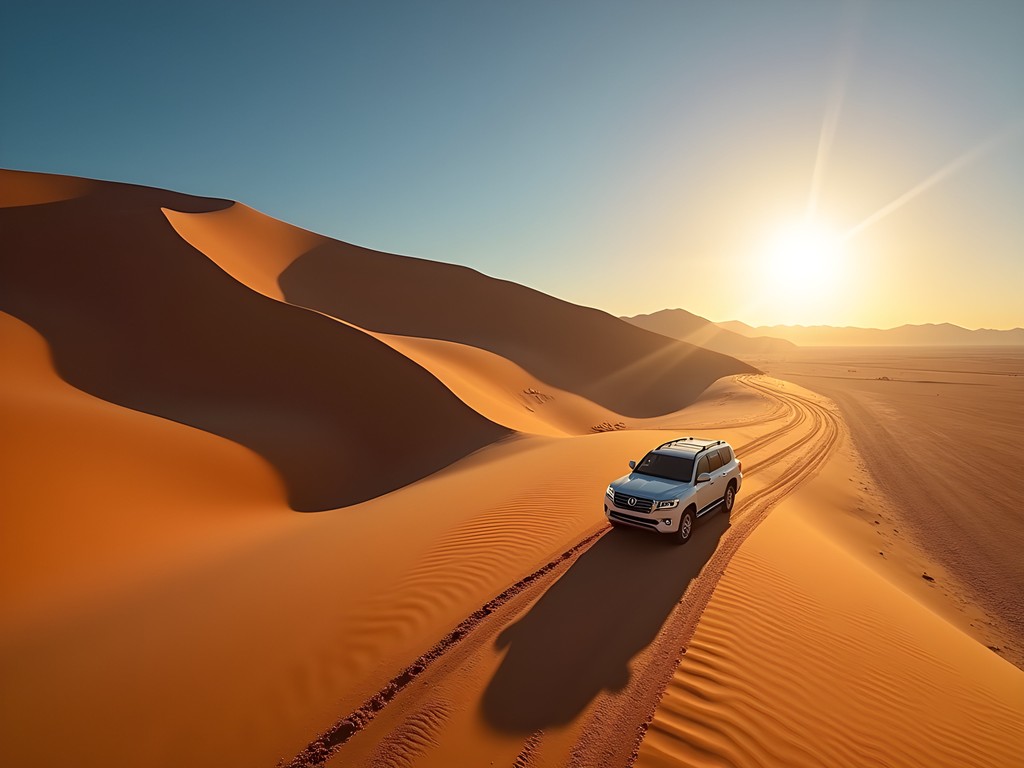
💡 Pro Tips
- Book accommodation inside the park (like Sesriem Campsite) for early access to the dunes before day visitors arrive
- Visit in winter (June-August) when temperatures are manageable for climbing
- Arrange your 4x4 rental well in advance as they're in high demand
Essential Gear for Desert Survival
The Namib Desert may be breathtakingly beautiful, but it demands respect. Having guided my family through various wilderness environments, I've learned that proper equipment isn't just about comfort—it's about safety.
Footwear presents a unique challenge here. The sand can reach scorching temperatures, yet you need stability for the climb. After experimenting with various options over my travels, I've settled on lightweight hiking boots with gaiters to keep sand out. For Big Daddy specifically, I wore my trusty trail runners which provided excellent traction on the ridge lines while being breathable enough for the desert heat.
Water requirements cannot be overstated. I carry a minimum of 3 liters per person, using an insulated water bottle to keep it cool. The dry air dehydrates you faster than you realize, and there are no natural water sources in the dunes.
Sun protection becomes your armor in this exposed landscape. Beyond the obvious sunscreen (minimum SPF 50), I've found a wide-brimmed hat with neck protection essential. My sun hat has accompanied me from the Highlands to the Namib and never disappoints.
For photography equipment, bring lens cleaning tools—the fine sand gets everywhere. I use a microfiber cloth and air blower religiously. My camera stayed protected in a dust-proof bag except when actively shooting.
One often-overlooked item: a lightweight scarf or buff. The versatility is remarkable—protection from sun, wind, and occasionally sandstorms. Mine has doubled as an emergency cooling device when soaked with precious water during particularly hot stretches.
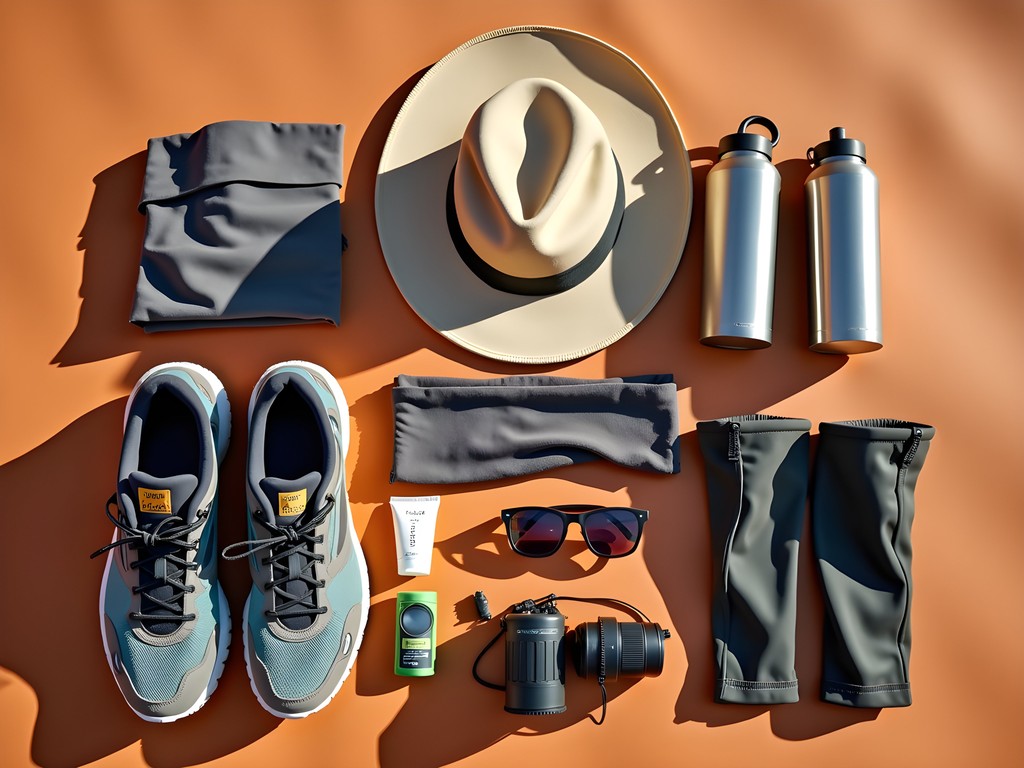
💡 Pro Tips
- Pack at least 3 liters of water per person—dehydration happens quickly and without warning
- Wear gaiters or sand guards with your footwear to prevent painful chafing
- Bring a headlamp if starting before sunrise (which you absolutely should)
The Climb: Strategy and Technique
Standing at the base of Big Daddy Dune in the soft light of early morning, I felt that familiar mix of excitement and trepidation. At 325 meters, this isn't just a walk in the park—it's a proper challenge requiring both physical stamina and tactical approach.
Timing is everything. My years in the museum world taught me to appreciate how light transforms artifacts; the same principle applies to these natural monuments. We began our ascent at 6:30 AM, shortly after the park gates opened. This early start is non-negotiable, even in winter. By 10 AM, the heat intensifies significantly, and the magic of the landscape diminishes as harsh overhead light flattens the dramatic dune contours.
The route itself presents choices. Most visitors take the 'tourist line'—the most direct but steeper path up the spine of the dune. Having climbed several dunes worldwide, I opted for the longer but more gradual approach along the ridgeline connecting Big Daddy to its neighboring dune. This adds perhaps 30 minutes to the journey but reduces the exertion considerably.
The technique for climbing sand dunes isn't intuitive. Each step requires deliberate placement, pressing your foot horizontally into the slope rather than pushing off vertically. I maintain a slow, steady rhythm, resting every 50 steps during steeper sections. The famous 'two steps forward, one step back' sensation is real, particularly on the final ascent.
Perhaps the most crucial advice I can offer: embrace the pace. This isn't a race. The Namib Desert has existed for over 55 million years—it rewards those who take time to observe its subtleties. I stopped frequently, not just to catch my breath, but to watch the interplay of light and shadow transform the landscape minute by minute.
The final push to the summit demands extra determination. The ridge narrows, the sand softens, and your legs will protest. But the reward awaiting at the top transcends the effort required to reach it.
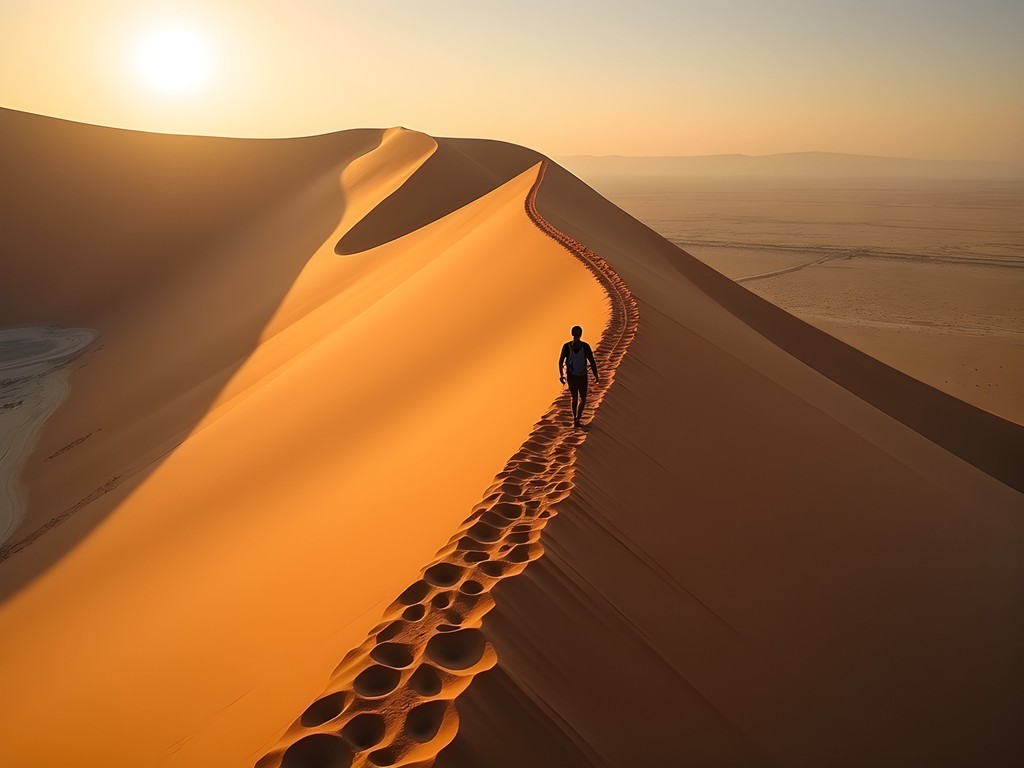
💡 Pro Tips
- Follow the ridgeline rather than climbing straight up—it's longer but less exhausting
- Take deliberate, horizontal steps to maximize traction in the soft sand
- Plan to reach the summit by 8:30 AM for the best light and temperatures
Deadvlei: The Reward Beyond the Summit
After conquering Big Daddy's summit, you're rewarded with a view that has haunted my dreams since my first visit—the hauntingly beautiful Deadvlei below. This white clay pan punctuated by 900-year-old petrified camel thorn trees creates one of Earth's most surreal landscapes.
The descent into Deadvlei is where the real fun begins. While the climb up Big Daddy demands patience and endurance, getting down offers pure, childlike joy. You simply point your feet toward the clay pan and run—or rather, let gravity pull you down the steep face in giant, bounding steps. It's the desert equivalent of fresh powder skiing, sinking ankle-deep with each stride as you descend at thrilling speed.
Once your feet touch the ancient clay pan, you've entered a natural art installation that would make any museum curator envious. The contrast between the blackened trees, white clay, rust-orange dunes, and deep blue sky creates a photographer's paradise. My background in art history couldn't help but draw parallels to surrealist paintings—Salvador Dalí would have felt at home here.
Photography in Deadvlei presents unique challenges and opportunities. The extreme contrast between shadow and light can fool camera meters. I typically underexpose slightly to preserve the rich colors of the dunes, then bring up the shadows in post-processing. My polarizing filter proved invaluable for managing the harsh desert light and enhancing the already dramatic sky.
Beyond photography, Deadvlei invites contemplation. The trees, which died when climate change altered the course of the Tsauchab River around 900 years ago, stand as silent witnesses to environmental transformation. They haven't decomposed because it's too dry for bacteria to survive—a sobering reminder of nature's extremes.
Take time to walk the entire pan. Most visitors cluster near the entrance, but venturing deeper rewards you with solitude and perspectives few capture. The silence here has a quality I've rarely experienced elsewhere—profound and primeval.
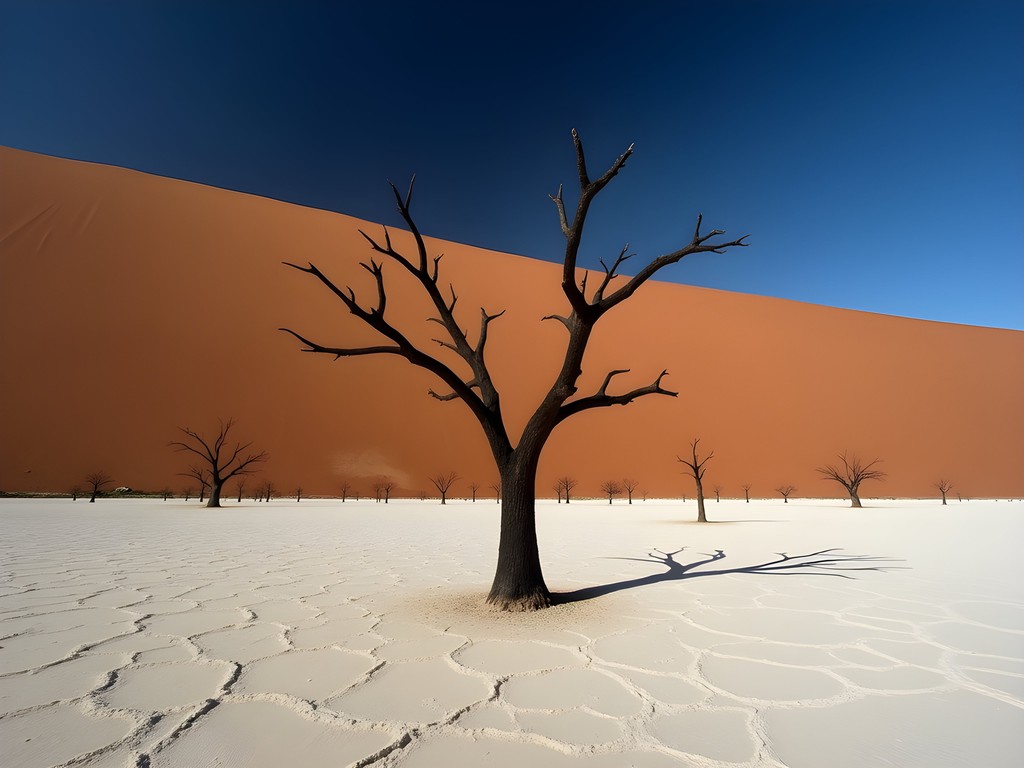
💡 Pro Tips
- For the classic Deadvlei photo, use a telephoto lens to compress the trees against the dune backdrop
- Walk to the far side of the pan to escape crowds and find unique compositions
- Bring a small cloth to clean your camera sensor—the dust is inevitable but manageable
Cultural Connections: Beyond the Physical Challenge
While the physical landscape of Sossusvlei captivates immediately, my curator's instinct always leads me to seek deeper cultural contexts. The Namib Desert isn't merely a geological wonder—it's home to some of humanity's oldest continuing cultures.
The San people (sometimes called Bushmen) have navigated these arid landscapes for thousands of years, developing sophisticated knowledge systems around survival in seemingly inhospitable environments. Before my trip, I read extensively about their relationship with the desert, which transformed how I experienced the dunes—not as obstacles to overcome, but as a living landscape filled with resources for those who understand it.
On my second morning, I arranged a guided cultural walk with a local San guide through my accommodation. This experience illuminated aspects of the desert invisible to untrained eyes—medicinal plants growing in seemingly barren areas, animal tracking techniques, and traditional methods for finding water. My husband's background as a Métis wilderness guide gave us common ground for fascinating exchanges about indigenous knowledge systems across continents.
The guide demonstrated traditional fire-making techniques using materials gathered from the desert margin—a humbling reminder of my dependence on modern equipment in this environment. I've carried my fire starter through numerous wilderness adventures, yet watching someone create flame using only local materials and generational knowledge was profoundly moving.
Namibia's complex colonial history also deserves acknowledgment. German colonization, South African administration, and the independence struggle have all left marks on the cultural landscape. Conversations with local staff at camps and lodges revealed perspectives rarely captured in guidebooks.
These cultural dimensions add essential context to the physical adventure of climbing Big Daddy. The dunes aren't just photogenic natural wonders—they're part of living cultural landscapes with deep significance to the region's indigenous peoples.
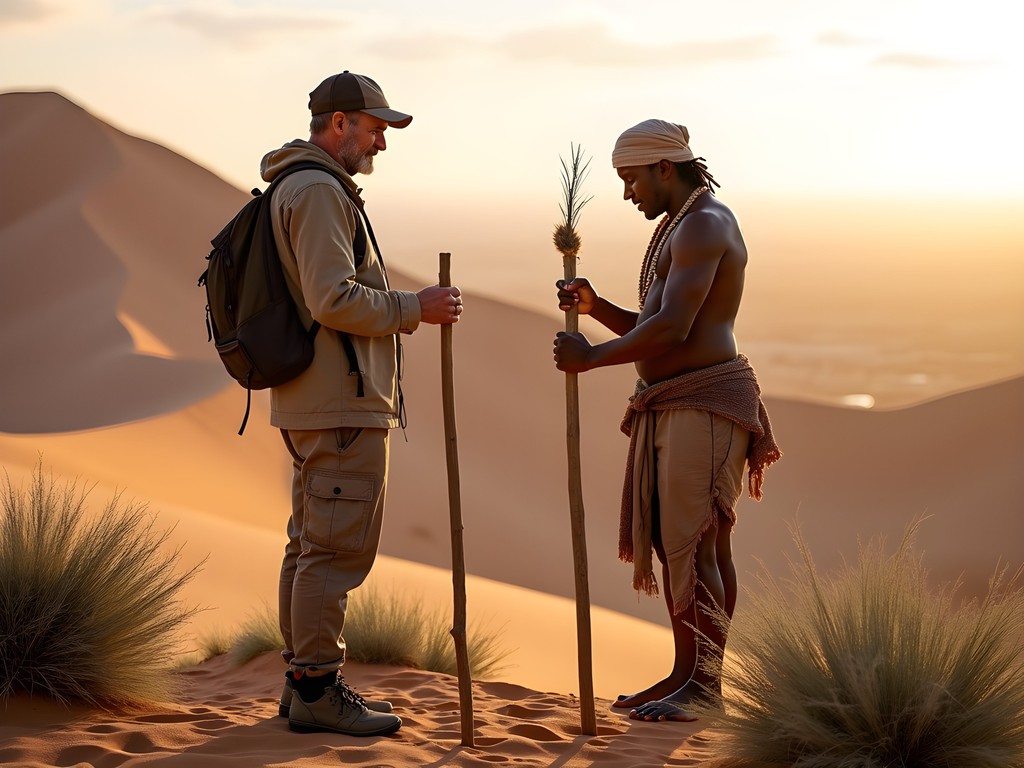
💡 Pro Tips
- Arrange a cultural tour with San guides to understand traditional desert survival techniques
- Learn a few basic phrases in Afrikaans or local languages—even simple greetings are appreciated
- Visit the NamibRand Nature Reserve to learn about conservation efforts protecting this fragile ecosystem
Final Thoughts
As I watched the sun set behind the ancient dunes on my final evening in Sossusvlei, casting long shadows across the desert floor, I reflected on what makes this journey so profound. It isn't simply the physical accomplishment of summiting Big Daddy, nor the otherworldly beauty of Deadvlei. Rather, it's the rare convergence of geological wonder, physical challenge, cultural significance, and personal transformation. The Namib Desert strips away pretensions, leaving you face-to-face with something primordial—both in the landscape and within yourself. Whether you're a seasoned adventurer or making your first foray into desert landscapes, climbing Big Daddy offers a journey that transcends the physical act of ascending sand. It connects you to deep time, to ancient cultures, and to a profound sense of our planet's remarkable diversity. Pack your water, lace your boots, and rise before dawn—Big Daddy awaits, and the person who descends into Deadvlei is never quite the same as the one who began the climb.
✨ Key Takeaways
- Start your climb early (before 7 AM) even in winter to avoid heat and crowds
- The ridgeline approach is physically easier than the direct route up Big Daddy
- Deadvlei is as important as the dune itself—allow ample time for exploration
- Cultural understanding enhances the physical experience of this ancient landscape
📋 Practical Information
Best Time to Visit
June to August (Namibian winter)
Budget Estimate
N$1500-2500 per day including accommodation, park fees, and 4x4 rental
Recommended Duration
2-3 days minimum
Difficulty Level
Moderate

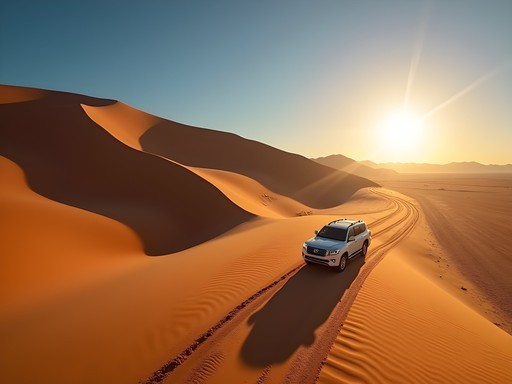

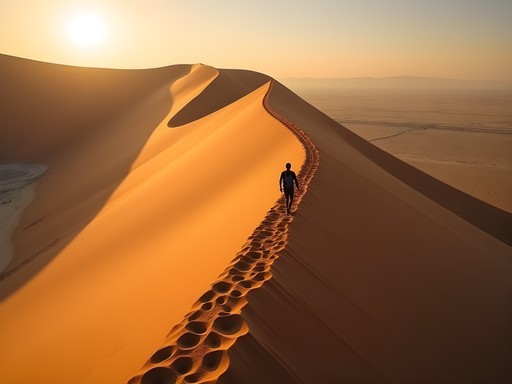

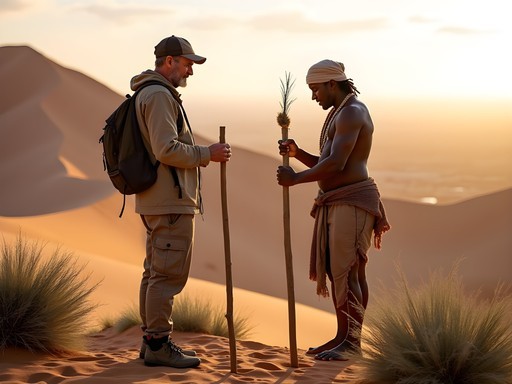


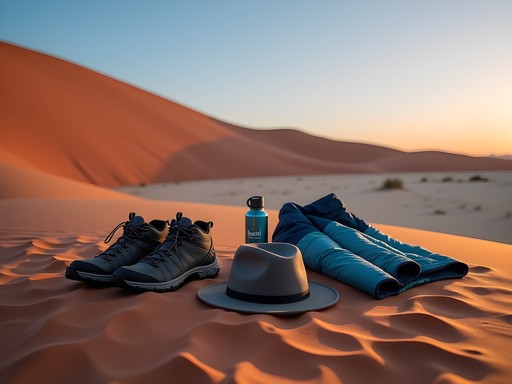
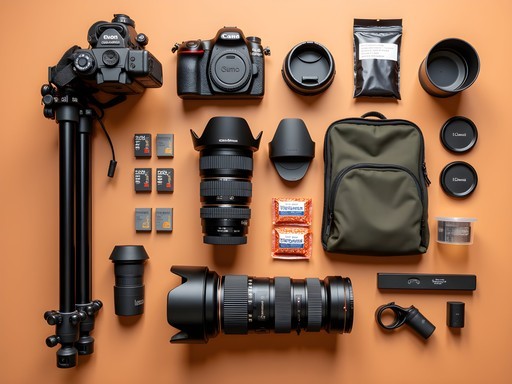






Comments
winterfan
Anyone done this climb in summer (December-January)? Wondering if it's completely insane or just very challenging? My only option is to visit during Christmas break.
Casey Andersson
I wouldn't call it insane, but you NEED to start at first light (like 5am) and be down by 9-10am latest. The heat by midday is brutal. Double your water estimate and consider a cooling neck wrap. The views are worth it though!
winterlife
Agree with Casey. Did it in November which was already scorching. Start SUPER early and be prepared to turn back if you're not feeling it. No shame in climbing the smaller dunes if Big Daddy seems too much in the heat!
winterfan
Thanks guys! Will definitely plan for the earliest possible start. Appreciate the advice!
winterlife
Just got back from Sossusvlei last month and your guide would have been SO helpful before I went! I totally underestimated how physically demanding the climb would be. The heat is no joke - even in winter! I started with 3 liters of water and still ran out. My top tip: wear gaiters or those little sock covers. I had sand in my shoes for days! Also, my wide-brim hat was the MVP of the trip. Worth every penny for the sun protection. The photos really don't capture how massive Big Daddy is until you're standing at the bottom looking up!
Casey Andersson
Eleanor, your post brought back so many memories! I climbed Big Daddy last year and that pre-dawn start is absolutely essential. The way you described the changing colors of the sand as the sun rises is spot on. I'd add that bringing trekking poles helped me enormously on those steep sections where the sand gives way beneath your feet. And that moment when you crest the ridge and see Deadvlei for the first time? Pure magic. Did you camp nearby or stay at one of the lodges? I splurged on Kulala Desert Lodge and the stargazing there was worth every penny.
winterlife
Were the trekking poles really necessary? Planning my trip for March and trying to pack light!
Casey Andersson
Not absolutely necessary, but they saved my knees on the way down! If you're packing light, just use a sturdy water bottle to dig into the sand on the steepest parts. Works almost as well!
Bryce Diaz
Eleanor, your description of that final push to the summit brought back such vivid memories! I remember standing at the base of Big Daddy three years ago, looking up and thinking "this doesn't look so bad." Two-thirds of the way up, I was questioning all my life choices! 😂 For anyone planning this adventure: the section Eleanor mentions about taking the ridge is crucial advice. I watched dozens of tourists struggle in the soft sand while I stayed on the firmer ridge and saved tons of energy. Also, don't miss walking down into Deadvlei after - the contrast between the white clay pan, red dunes and blue sky creates the most surreal landscape I've ever photographed. One tip I'd add: bring a lightweight scarf or buff to protect your face. When the wind picks up, the sand can really sting!
smartclimber8588
Great guide! I'm heading there in November - did you find regular trainers/sneakers worked or do I really need hiking boots? Also, any thoughts on whether it's worth staying at Sesriem camp inside the park vs. outside?
Bryce Diaz
Not Eleanor, but I've climbed Big Daddy twice now. Closed shoes are a must, but they don't need to be hiking boots - my trail runners worked perfectly. As for accommodation, DEFINITELY stay inside the park if you can get a spot. You'll get access to the dunes an hour before the gates open to outside visitors, which means you can be halfway up Big Daddy before the crowds arrive. The difference in experience is night and day!
smartclimber8588
Thanks Bryce! Just booked Sesriem camp - managed to snag a cancellation. Super excited!
beachwalker
Just did this climb last month and Eleanor's advice about starting before sunrise was spot on! The temperature difference between 6am and 9am is DRAMATIC. We made it to the top just as the sun was lighting up Deadvlei and it was magical. One thing I'd add - bring twice as much water as you think you need. The sand is much deeper than it looks and each step takes serious effort. My calves were burning halfway up but the views were 100% worth it!
smartclimber8588
Was it really that strenuous? I'm planning to go in November and I'm not exactly in peak shape...
beachwalker
It's definitely challenging but doable if you take it slow. Just walk along the ridgeline where the sand is more compact. And start EARLY - can't stress that enough!
luckyking
Is it doable with kids? We're planning a family trip with our 10 and 12 year olds.
backpackpro
I saw several families with kids that age. They seemed to handle it fine, just bring extra water and snacks. The kids were actually faster on the dunes than most adults!
luckyking
That's great to hear, thanks! My kids will probably race to the top while I struggle behind.
backpackpro
Just got back from Namibia last month and Big Daddy was definitely the highlight! One thing to add - the 2WD parking area is 5km from the 4WD parking lot, which is another 1km from the dunes. If you don't have a 4WD, budget extra time for the shuttle or the long walk. We started at 5am and it was worth every second of lost sleep. The silence up there is something else - complete desert solitude before the crowds arrive.
travelrider
Great post! How many days would you recommend staying in the Sossusvlei area? Is it possible to do everything in a day trip or better to stay overnight?
travelrider
Thanks Gabriella! Definitely going to book 2 nights then. Any specific lodges you'd recommend?
Gabriella Tanaka
Not Eleanor but I'd recommend at least 2 nights. One day for Big Daddy and Deadvlei, another for exploring Sesriem Canyon and some of the smaller dunes. The light is so different morning vs evening that you'll want both experiences. Plus, the stargazing is incredible if you stay in the area!
Gabriella Tanaka
If you can splurge, stay inside the park at Sossus Dune Lodge - you get access to the park before others. Otherwise, the lodges along the C19 road are good options with beautiful settings. The closer to the gate, the less driving in the dark!
journeychamp
How difficult is the actual climb? I'm reasonably fit but not a hiker. Can regular tourists make it or is it more for serious trekkers?
wanderstar
I'm not a serious hiker either and managed fine! It's challenging because of the sand (two steps forward, one step back kind of feeling) but not technical. Just take it slow and bring lots of water. The view is worth every bit of effort!
Venture X
Premium card with 2X miles, $300 travel credit, Priority Pass